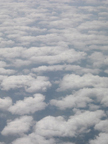|
David refers to his photography as "my form of communicating--expressing my impressions, my thoughts, and feelings. It is not simply a means of recording what is right now." Striving for the essence, that beneath the surface, is elemental for him. When he first started photography, David was most interested in pastoral images. More and more though, he came to enjoy shooting people. People in context is his aim--whatever it is that defines the person. Given his interest in class issues, often the photographs reflect the power dynamics of class. He focuses on the essence again of the person or the relationship depicted. Sensitive to gender issues, often his portrayal of women capture the "subaltern ." While shooting photos of dancers, David always tried to capture the essence of the dance through photography, but was never satisfied with the results. This led him in an exploration of video as a possible means of capturing the elusive. He quickly realized, even with moving pictures, he could not record depth, the three-dimensional form in which dance becomes. However, video was a much greater toolbox to communicate with than photography alone. Through processes of learning new forms of communication and spending thousands of hours studying movement through his lenses David's art has evolved. Learning frequently occurs in multiple directions simultaneously, and while David's photography informed his discovery of video and film, studying cinema affected David’s photography. As his cognition of movement continued to grow, dawning awareness of dimensions within the image, layers, textures of the image, multiple meanings superimposed have informed his photography infusing his work with greater depths. When, serendipitously, David saw Orissi dance performed by Ratna Roy and her Urvasi dancers in 1981 he fell in love. He had always thought that dance was effeminate--strictly for females--but what he saw in Orissi was grace combined with power. He also recognized the dance as a means of communication. Classical Indian dance is literally a language, one with a codified vocabulary. At that point David's life was permanently altered. He soon started going to dances--many kinds of dances, not just Orissi. Trips to Orissa, the people, the history, and the dance legacy grew on him. The preservation of the dance became a passion. The Mahari tradition of Orissi dance, the jatras of Orissa, and some of the visual art forms such as "Dhokra, the Lost Wax Process," were a few of the areas David began videotaping. David gave up his life's career in information technology and has donated his own money and time (literally thousands of hours) to work on capturing, recording, and preserving art traditions of India. David's exhibit, "The Post Colonial Reconstruction of Dance Theatre in India: A Study of Orissi Dance," was partially funded by Washington Commission for the Humanities, and Ivey Seright International. In 1989 the United States Education Foundation in India, USEFI, sponsored a gallery exhibit of David's works in Calcutta, Bengal. Some of David's videos are
available for purchase.
All materials, including all text and images, on this
web site are
|
|





